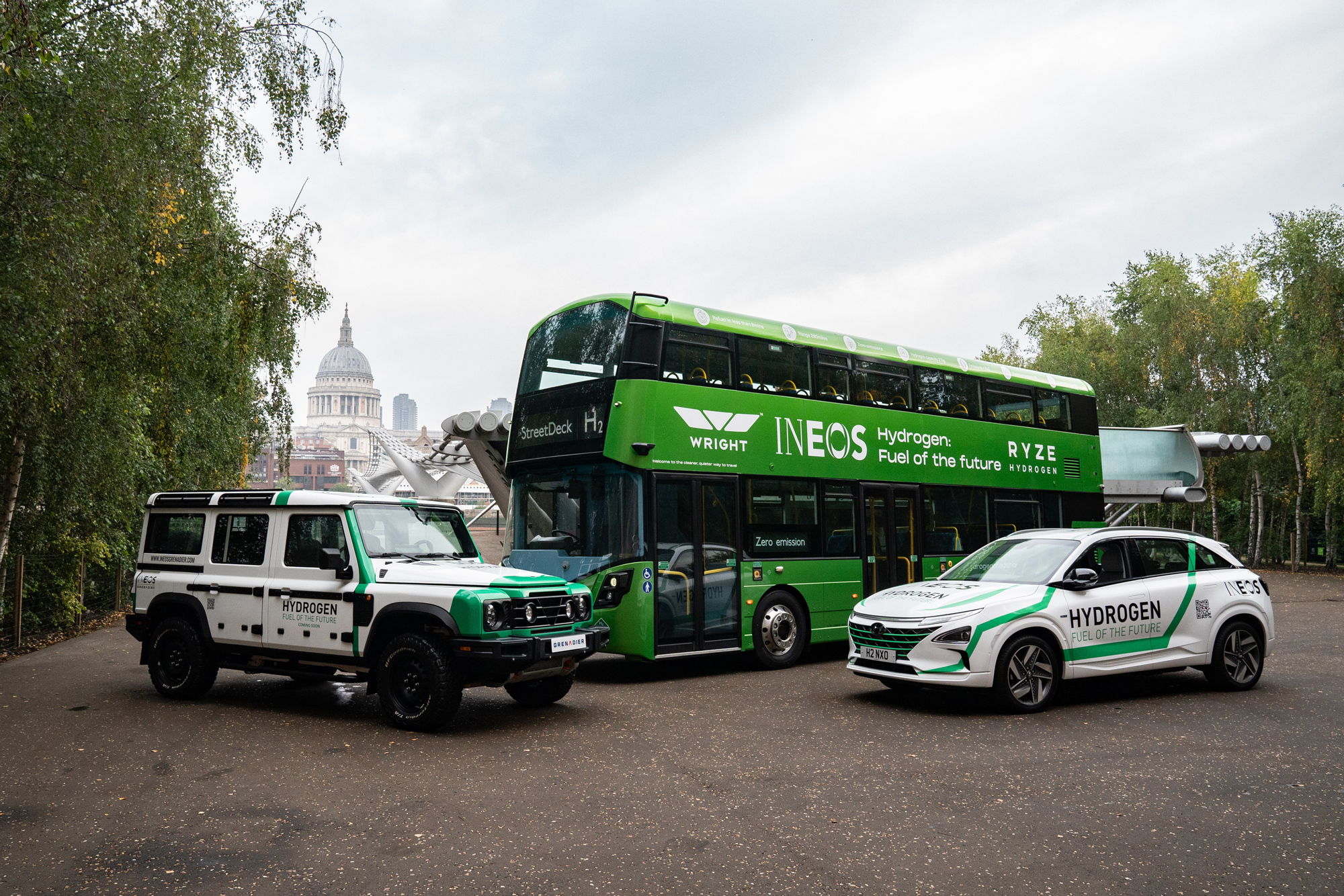Ineos, the European company behind the much-anticipated Grenadier 4×4, has just doubled down on its support of more environmentally friendly fuel sources with a hydrogen advocacy campaign. This effort comes on the heels of a €2-billion investment in “green hydrogen” and was launched with an editorial piece that was published in the Sunday Telegraph on the hydrogen economy written by Sir Jim Ratcliffe, INEOS’s founder and chairman:
“We believe that hydrogen is the fuel of the future and INEOS is determined to take a leading role in its development. When used in a fuel cell, hydrogen only produces water and is the UK’s best chance of reaching its carbon reduction targets”.
Interestingly, Ineos is actually the largest European operator of electrolysis, the process needed to produce clean, low-carbon hydrogen. Clearly, they stand to benefit financially from the success of hydrogen as both an industrial resource as well as a fuel for vehicle-based transportation. But the combustion of hydrogen results in less greenhouse gas emissions than gasoline or diesel fuel, so ultimately, the benefits of hydrogen’s success extend well beyond Ineos’ bottom line. Additionally, the prospect of hydrogen as a fuel source for heating homes has the potential to cut greenhouse gas emissions by up to 1/3rd, according to a press release by Ineos Automotive.
Ineos’ automotive division will be backing the push towards a cleaner hydrogen economy with a hydrogen version of its Grenadier 4×4 as early as 2022 thanks to a partnership agreement with Hyundai motor company who will be providing the fuel cell technology to back the project. In the future, “blue hydrogen” technology may allow for the capture of carbon by-products that can be sequestered underground, but in the meantime, Ineos will continue to support green hydrogen production from water via electrolysis.
A final word from Sir Ratcliffe regarding hydrogen fuel development and government support moving forward:
“The issue is that industry can only do so much, and the UK government must start to invest in the development of our hydrogen infrastructure to allow the gas to be much more widely used. At the moment, we are massively lagging behind Europe and the gap is starting to grow”.


